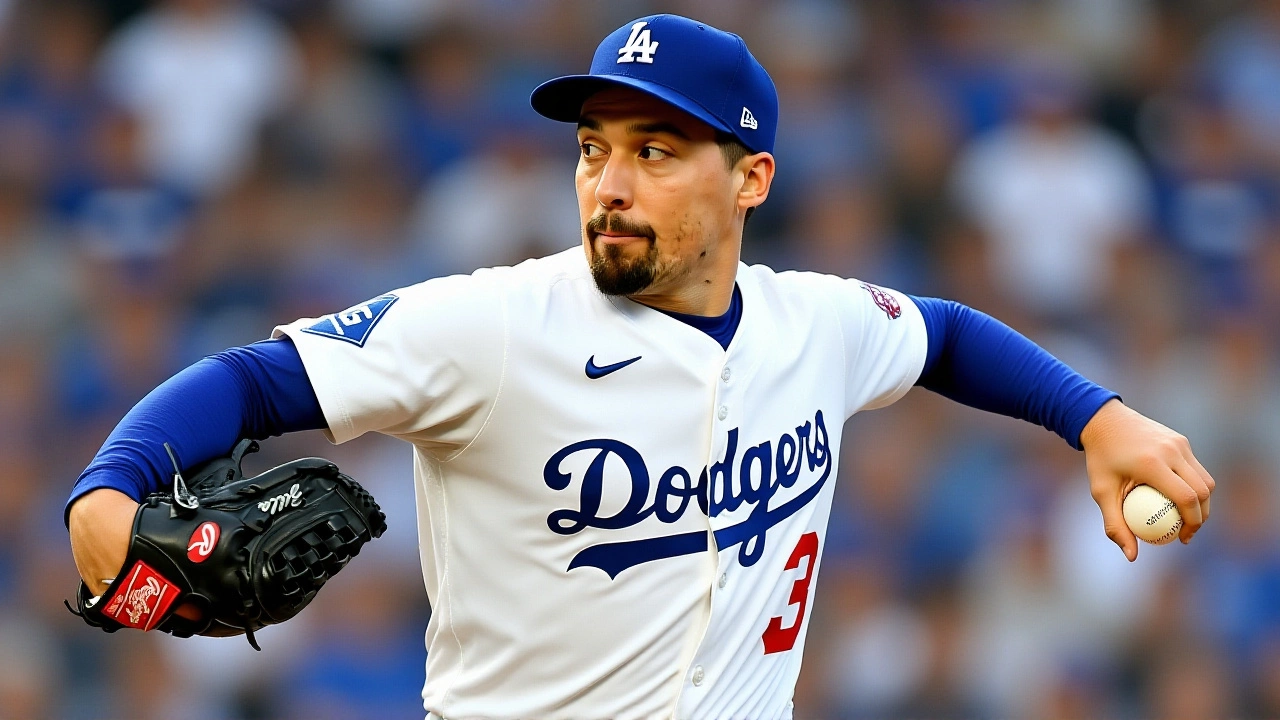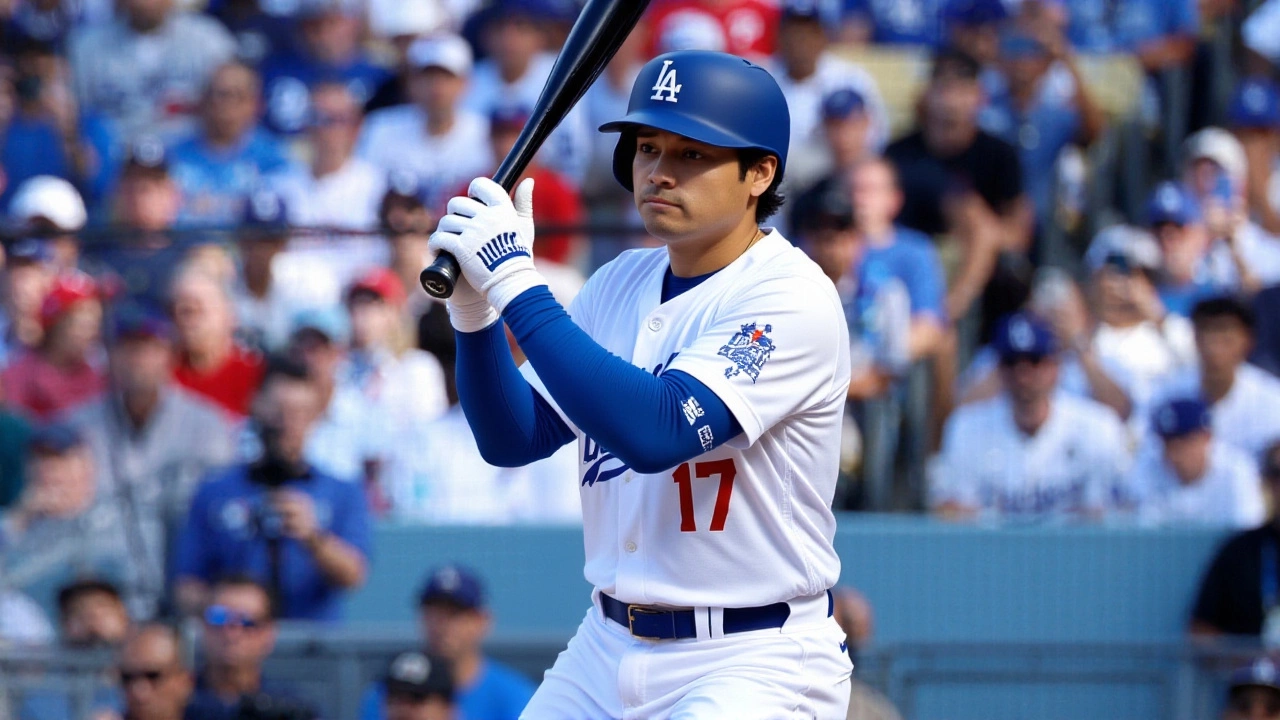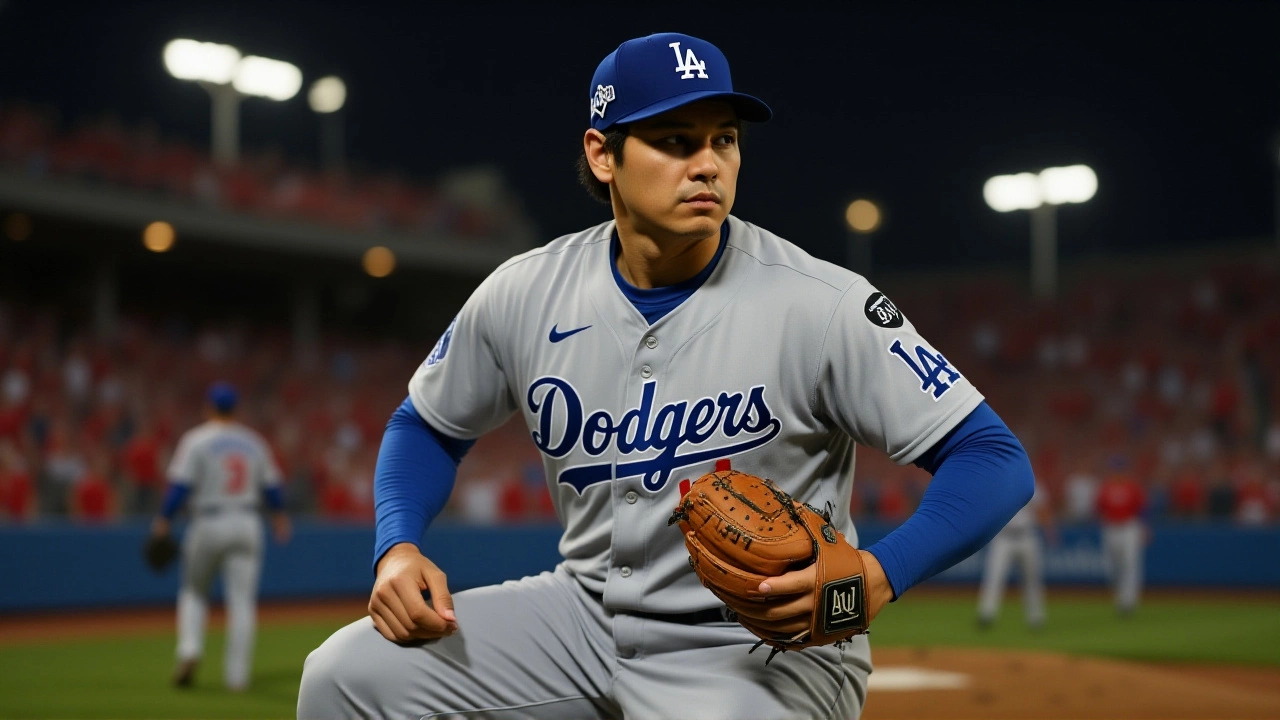When Shohei Ohtani, the two‑way superstar from Japan, stepped onto the mound at Dodger Stadium on October 17, 2025, he also tossed a bat into the air and sent a 446‑foot ball soaring over the left‑field wall. The incredible feat – three home runs and ten strikeouts in a single National League Championship Series (NLCS) contest – gave the Los Angeles Dodgers a 5‑0 sweep of the Milwaukee Brewers and secured a spot in the 2025 World Series against the New York Yankees. Fans in seats numbered 53,239 watched the drama unfold under the bright California night sky, while millions more tuned in for what many are already calling the greatest two‑way performance in postseason history.
Why Ohtani’s Game Was a Turning Point
For weeks, Ohtani had looked like a ticking time‑bomb. After a sluggish stretch in which he logged only two hits in 25 at‑bats and struck out 12 times across the NLDS and the first two NLCS games, doubts began to surface about his swing mechanics and the toll of pitching and hitting every day. On the off‑day before Game 4, he asked hitting coach Robert Van Scoyoc to let him take batting practice on the field – a rare move that signaled urgency.
“If this was a regular‑season situation and you’re looking at a small sample, you might sit him down,” said Dave Roberts, the Dodgers manager. “But we’re in the playoffs. He wanted to get feel for the pitch, and that change sparked something.”
Breakdown of the Historic Performance
The game began the way a movie script would dictate: Ohtani, also the scheduled starter, opened the bottom of the first inning against left‑hander Jose Quintana, Brewers starter. After a 19‑pitch batter‑up where he struck out three Brewers and walked one, he turned his bat on the next pitch and launched a 446‑foot blast that cleared the second deck at a reported 117 mph exit velocity. That leadoff homer marked the first time a pitcher ever led off a game with a home run – a record that holds for both regular‑season and postseason play.
He didn’t stop there. In the third inning, Ohtani faced reliever Perkins and sent another ball over the left‑field fence. A fifth‑inning showdown with Brewers reliever Sal Frelick produced his third long ball of the night, cementing a three‑HR total that no pitcher had ever matched in a playoff game.
On the mound, Ohtani was equally dominant. He tossed six and a third innings, allowing just two hits and striking out ten batters. His fastball sat in the 95‑98 mph range, while his slider kept the Brewers guessing. The final line? Three homers, ten strikeouts, zero runs allowed – a statistical line that will sit in the record books forever.
Reactions from the Dodgers Camp
Teammates rushed to congratulate their teammate. “I’ve never seen anything like it,” said Mookie Betts, the Dodgers’ center‑field star. “Shohei just turned the whole game on its head. We all fed off his energy.” Right‑fielder Teoscar Hernández added, “When you see a pitcher doing that, you know the opposition is rattled.” Even the bench coach, Brant Brown, remarked that the performance validated the risky decision to give Ohtani extra batting practice.
Statcast analysts were equally stunned. The combination of a 117 mph exit velocity on the leadoff shot and a 10‑strikeout pitching line in the same game is a statistical outlier so extreme that it may never be replicated.

Brewers’ Perspective and What Went Wrong
From the Milwaukee side, the loss was a bitter pill. General Manager Matt Arnold acknowledged that the team simply didn’t have a game plan for a pitcher who could also dominate with the bat. “We prepared for Quintana, but we didn’t anticipate Shohei’s bat being a factor when he’s on the mound,” Arnold said. Manager Pat Murphy echoed that sentiment, noting that the bullpen’s usual roles were upended.
Brewers center‑field star Sal Frelick tried to keep his cool, saying, “We know how good Shohei is. It’s just one of those nights where everything aligns for him.”
The loss also highlighted Milwaukee’s reliance on a traditional pitching‑first approach. Analysts point out that the Brewers’ staff, while solid, lacked a left‑handed reliever capable of matching Ohtani’s power, a gap that may force the club to rethink roster construction ahead of next season.
What This Means for the World Series
With the Dodgers now set to face the American League champion New York Yankees, the spotlight is on Ohtani’s stamina. Can he continue to pitch deep into games while maintaining his historic power at the plate? The Yankees, led by veteran ace Gerrit Cole, will certainly devise a strategy to neutralize the two‑way threat.
Baseball historians are already debating whether Ohtani’s performance could change how teams value two‑way talent. If he repeats even a fraction of this night, the Dodgers might consider giving him more starts in the regular season, potentially reshaping roster calculus league‑wide.

Historical Context: Two‑Way Players in Baseball
Before Ohtani, the most prominent two‑way player was Babe Ruth, who transitioned from pitcher to full‑time hitter in the 1920s. In the modern era, few have attempted the dual role, and none have done it at Ohtani’s scale. His contract, a $700 million, 10‑year deal signed on December 9, 2023, made him the highest‑paid athlete in team‑sport history, a figure that now seems justified after this night.
Academics at the Baseball Research Institute note that Ohtani’s success could trigger rule‑book discussions about pitch counts, rest days, and the allocation of roster spots for two‑way players. The National League, still without a designated hitter in 2025, may see a push toward adopting a universal DH to preserve the novelty of players like Ohtani while protecting their arms.
- Key Fact 1: Ohtani became the first pitcher to lead off a game with a home run.
- Key Fact 2: He hit three homers and recorded ten strikeouts in the same postseason game.
- Key Fact 3: The Dodgers swept the Brewers 4‑0 to clinch the NL pennant.
- Key Fact 4: The performance came after a slump of two hits in 25 at‑bats.
Frequently Asked Questions
How does Ohtani’s performance affect the Dodgers’ World Series chances?
The Dodgers now have a player who can change a game both on the mound and at the plate, giving them a tactical edge. If Ohtani can maintain his health, he forces the Yankees to plan for two threats, potentially shortening the series.
What adjustments did Ohtani make before Game 4?
He requested extra field‑level batting practice, allowing him to see live pitching in real time. Hitting coach Robert Van Scoyoc said the change helped Ohtani regain his timing and confidence, which translated into the historic swing.
Has any pitcher ever hit a leadoff home run before?
No. Ohtani’s leadoff blast is the first in MLB history, regular season or postseason. The record underscores how unique his two‑way skill set truly is.
What could the Brewers do to avoid a repeat of this loss?
Analysts suggest Milwaukee add a left‑handed power reliever and consider a more flexible lineup that can adjust mid‑game when facing a two‑way threat. Off‑season scouting may also target pitchers with better neutral‑hit profiles.
Will Ohtani’s contract set a precedent for future two‑way players?
The $700 million deal already raises the salary ceiling for elite talent. If Ohtani continues delivering at this level, teams may be willing to invest similarly in dual‑role prospects, potentially reshaping player development pipelines.
